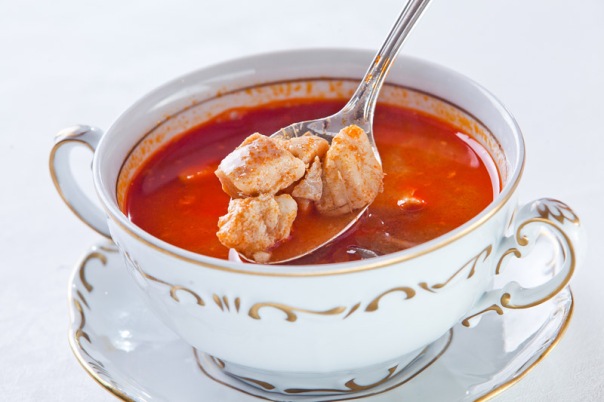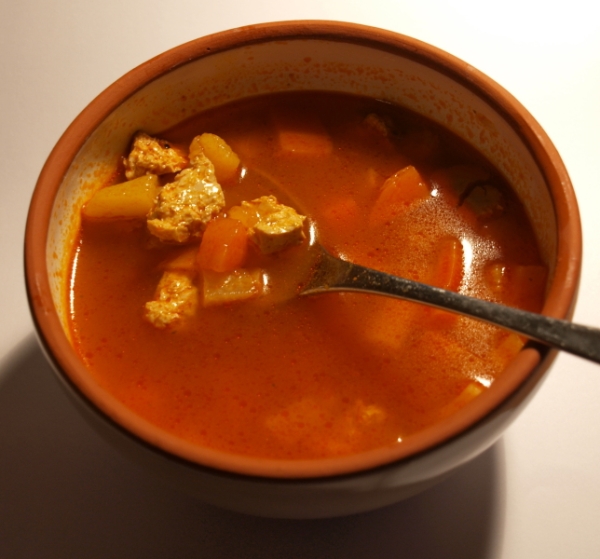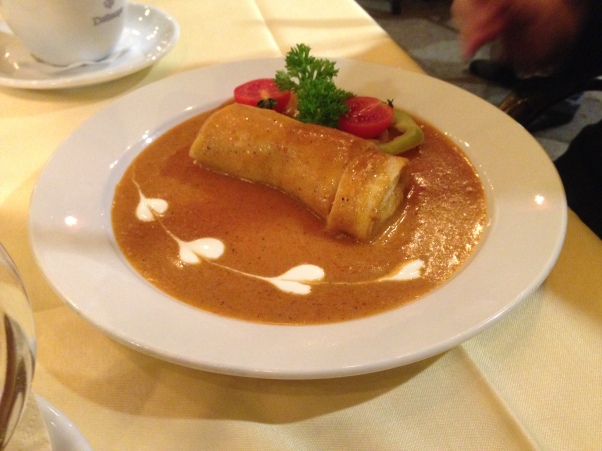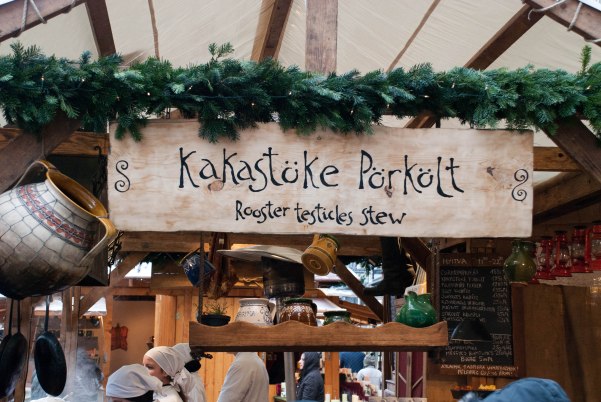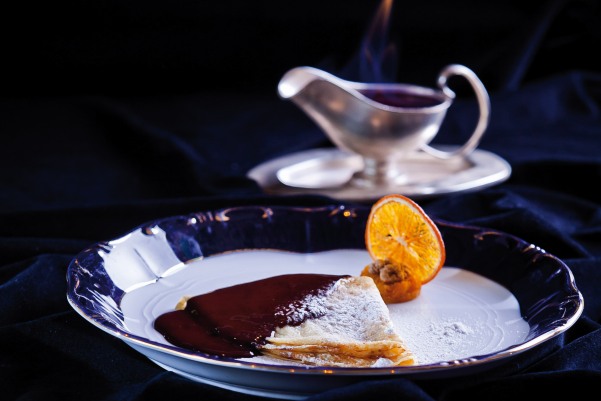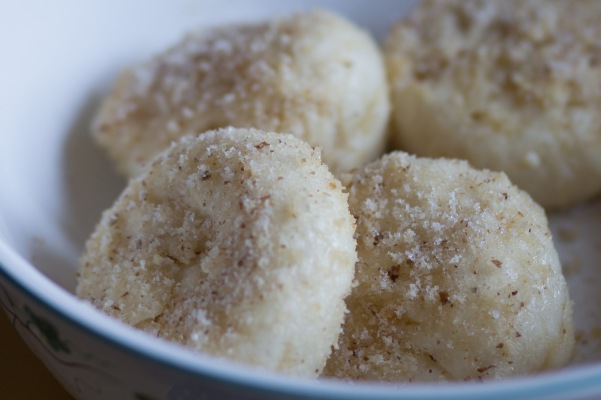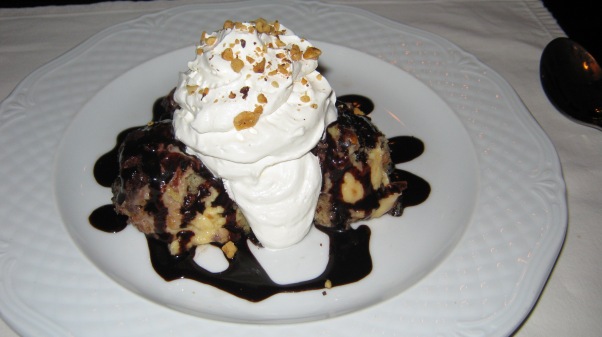Vörösmarty tér
This is the most well-known Christmas market and has been chosen as one of the 10 most attractive Christmas fairs in Europe.

Chrismas Stands at Vörösmarty tér, Photo: Budapest Moments, Flickr
No wonder, the location can’t be more central, the decoration is very festive, there are two stages which host various events to entertain all ages, the merchants sell delectable products and the food stalls will enchant you with the seasonal scents and tastes.
On the stages there are varied performances, like concerts (folk, world music, jazz, blues, soul, etc.), held every day; at the weekend, from late morning till early night, and evenings only during the week.
Each year there is also a heated area for children interested in arts and crafts. These free activities are usually held on weekdays in the afternoons and during the weekends in the mornings (10 am – 1 pm) and also in the afternoons (4 pm-7 pm).
Every Sunday afternoon the candles of the huge Advent wreath are lit, a very festive way countdown to Christmas.
Visiting the market is also a great opportunity to purchase some festive presents for your beloved ones like jewellery, ceramics, books, CDs, DVDs, musical instruments, wooden and other toys, puppets, horn goods, calendars, graphics, clothes, hats, caps, bags, leather products, knives, glass products, decorations, etc. As well as being a good source for seasonal and artisanal food products, like gingerbread, honey, artisan chocolate, artisan cheese, tea and fruit wines.

Christmas Market, photo: Budapest Moments, Flickr
If you’re feeling hungry, there are many food caterers offering delicious Hungarian and international Christmas dishes and other seasonal delicacies.

Food Stall, Photo: Kirk Siang, Flickr
You can taste the indispensable stuffed cabbage that’s one of the most common Christmas dishes in Hungary. Mangalica pork sausages, homemade filled Hungarian flat bread baked on an iron griddle and cabbage in a rye loaf are some other classic dishes that can be tasted here.
Alternatively, you can grab a lángos (fried dough) most commonly topped with sour cream and grated cheese, but there are many other versions for the topping.
Another festive snack not to be missed are roast chestnuts.
Although it can be bought all year round, the seasonal flavourings, like ginger or poppyseed-raisin, will bring you into a festive mood.

Chimney Cake (Kürtős kalács) Photo: Simon Q, Flickr
For a winter warmer try a strawberry wine, cherry grog or the traditional mulled wine.
The Christmas fair on Vörösmarty tér isn’t just about enjoying food and drink and buying gifts but also provides an opportunity to make donations to those in need. Look for the charity booth if you are interested in donating.
For further information a tourist information point is set up with printed materials and the staff speak foreign languages.
How to get there
Vörösmarty tér is a 5 minute walk if you head north from our apartments on Váci utca.
From the Castle district on Buda side take bus 16 and get off at the terminal (Deák tér).
From Heroes Square and Széchenyi Bath take metro no. 1 until the terminal (Vörösmarty tér).
If you are on the Pest side next to the river Danube, take tram no. 2 and get off at Vigadó tér stop.
St Stephen’s Basilica
The facade of the Basilica gives an amazing backdrop for the market and set up in the middle of the square there is usually an ice skating rink for children.

Christmas at Basilica, photo: Kirk Siang, Flickr
Almost every evening there is an Advent or Christmas concert held in the church that helps to put you in the festive mood.

Gingerbread, Photo: Budapest Moments, Flickr
How to get there
Szent István tér is a 10 minute walk from our apartments heading north.
From the Castle district on Buda side take bus 16, get off at the terminal (Deák tér) and cross Erzsébet tér.
From Heroes Square and Széchenyi Bath take metro no. 1 until Deák tér stop and then cross Erzsébet tér.
If you are on Pest side next to the river Danube, take tram no. 2 and get off at Széchenyi István tér stop. Walk along Zrínyi utca and the Christmas market will be at the end of the street.
Bálna Cultural and Commercial Center
There is a third Christmas market held in Bálna, a cultural and commercial center on Pest side next to the Danube shore between Petőfi and Szabadság bridges. (Address: Fővám tér 11-12. ) This is the smallest one.
In wintertime, each Sunday, a market called Antik Placc is held in the building where antiquarians and designers sell their products. It’s an indoor event accompanied by concerts and different activities for children and adults.
Gingerbread City is a contemporary Christmas statue. Anyone who is willing to participate in this social art can reserve a plot, and exhibit his / her own home made gingerbread building to the public by placing it on its plot at the city building reception. The illuminated Gingerbread City is open usually from mid-December till the end of January and the entrance is free.

Photo: Zsolt Madarász (2015

Photo: Zsolt Madarász (2015)
There is also an ice skating rink set up on the terrace of Bálna which has a great view of the river Danube, the bridges and Gellért Hill.
How to get there
Bálna is a 10 minute walk from our apartments heading south. Walk downstream along the river Danube and you will arrive at Bálna just after the green Szabadság-híd (Liberty Bridge).
You can also take tram no. 2 that runs along the river on Pest side. Get on at Március 15. tér and get off at Zsil utca (2 stops). It’s easy to spot the tram at this time of year as it is lit with Christmas lights and takes passengers between its two terminals Jászai Mari tér and Közvágóhíd.
From Heroes Square and Széchenyi Bath take metro no. 1 until Deák tér stop. There change to metro no. 3 and get off at Kálvin tér stop. Walk for about 5 minutes towards the green Szabadság-híd (Liberty Bridge) and then turn left and after a short walk Bálna will be in front of you.
If you are on Pest side next to the river Danube, take tram no. 2 and get off at Zsil utca stop.
18 Suggestions for What to Do in Budapest in Rainy Weather
About the authors: Virág and János
Virág, a native of Budapest, and János, who’s been living in the city since 1997 are real fans of the capital of Hungary and try to awake the enthusiasm of others. They are dedicated to helping tourists to make most out of their stay.
Here you can read more about them: http://katonaapartments.hu/
